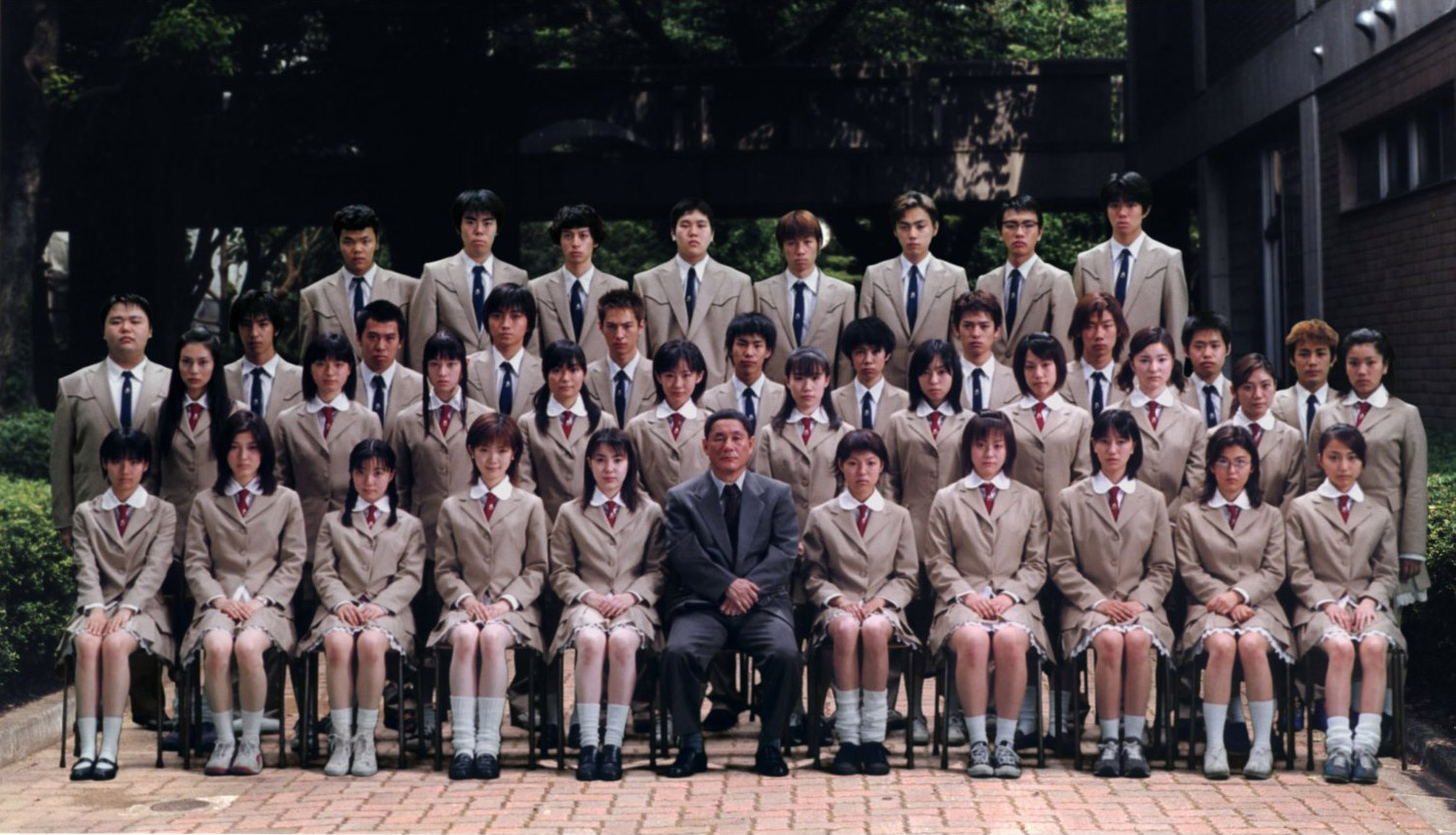Table of Contents Show
A group of young people are selected among societal classes and thrust into a closed-off arena filled with danger, both environmental and human in origin. All other contests must die in order for the winner to survive. The bloodbath was captured on video and broadcast to an audience. The movie, based on a book of the same name, is a violent showing of senseless death and unnecessary gore. This synopsis obviously describes The Hunger Games. It also describes Battle Royale.
Kinji Fukasaku’s Battle Royale sent shockwaves through society upon its release in 2000. The gore and vivid imagery captivated audiences around the world, including Quentin Tarantino. (( “Quentin Tarantino’s Top 20 Favorite Films,” Wayback Machine. Last modified April 18, 2012. )) Released just a year after the Columbine massacre and a year before the 9/11 terrorist attacks, Battle Royale dwells in between American tragedies.
While the subject of child killings is tough to sell in the best of times, it’s amazing that Battle Royale managed to find worldwide success in the era it did. Given that its release predates The Hunger Games by 12 years, it seems at first glance that Battle Royale is the predecessor of The Hunger Games. The Hunger Games received immediate box office success upon its release. With celebrity fans such as Taylor Swift (who sang “Safe and Sound” for the soundtrack), The Hunger Games was widely accepted by the American public.
Its depiction of systemized oppression and youthful bloodbaths came over a decade after the era-defining American massacre Battle Royale debuted in. The acceptance of everyday violence, almost a decade after the Iraqi War, has been society’s “new normal.” Did Battle Royale pave the way for The Hunger Games, acting as its predecessor? Or was The Hunger Games a natural dystopian conclusion given these world events?
Battle Royale, The Teenage Fight
Battle Royale’s cast is made up of one ninth grade high school class. This is a founding principle of the movie: teenage drama intermingled and intertwined with deadly decisions. There are the popular girl Mitsuko Souma, who is slightly psychotic; the young lovers Shuya Nanahara and Noriko Nakagawa, who are sickeningly devoted to each other; the transfer students Kazuo Kiriyama and Shogo Kawada, who are scary and cool and foreign; the circle of nerds; and the clique of mean girls.
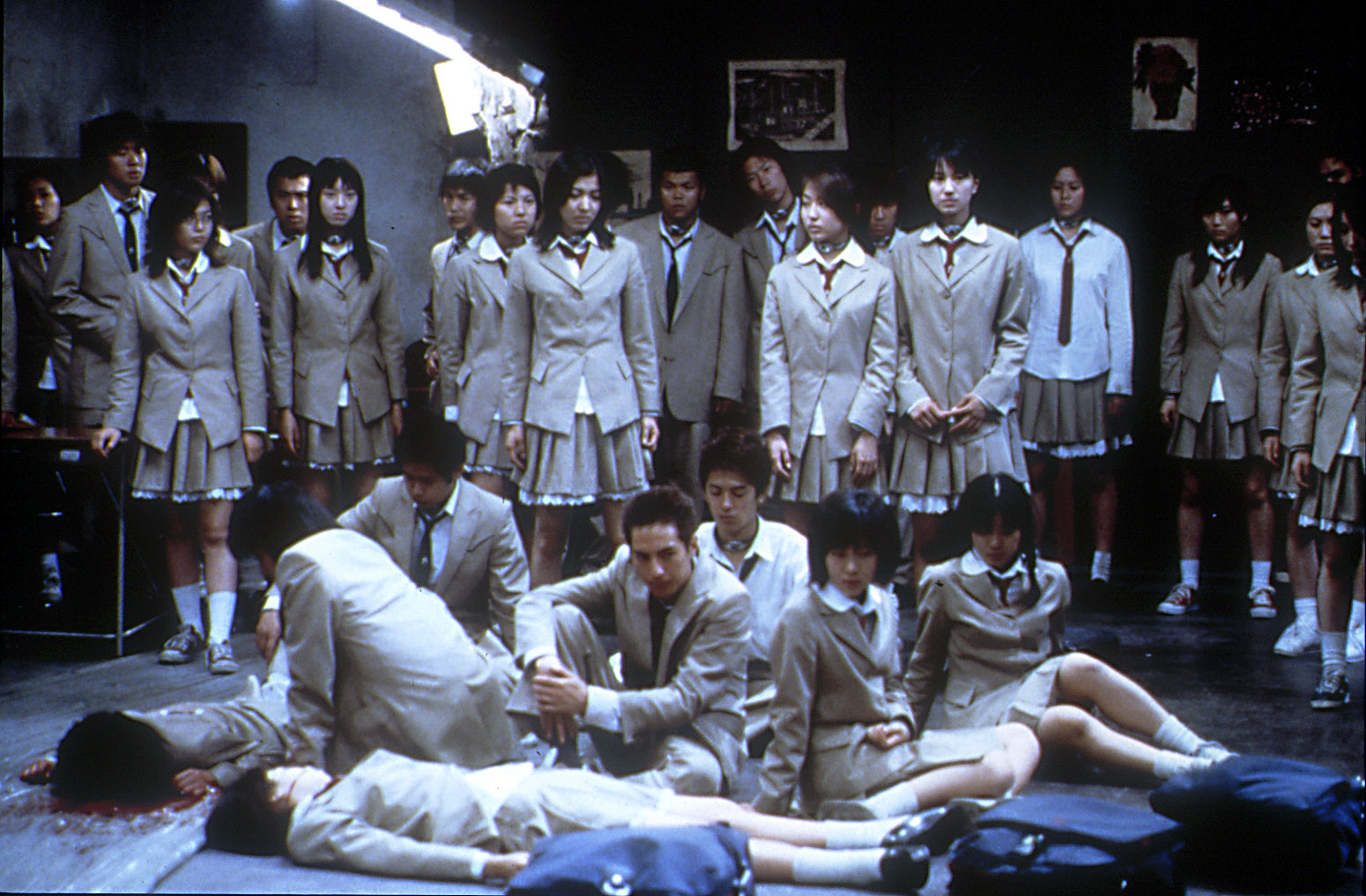
Each teenager, cast in a stereotypical high school role, is true to type. The nerds devise a way to take down the computer system which controls some of the dangers of the island they are stranded on. The mean girls fight over the cute boy and end up turning on each other and killing each other during dinner. The popular girl is a wonderful display of mania; a Regina George equipped with scythe and stun gun.
The Hunger Games, The Trial Of Tributes
The Hunger Games has a wider range of ages for their contestants called Tributes. Young Rue, only twelve, faces against Cato who is eighteen. The wider range of ages shows the horror of young children dying before they have a chance to live. The older Tributes are portrayed as ruthless; the younger Tributes as defenseless. Nestled in between these extremes dwells the remaining Tributes. Katniss is strong and Peeta is hard-working, both of which make up a romantic relationship.
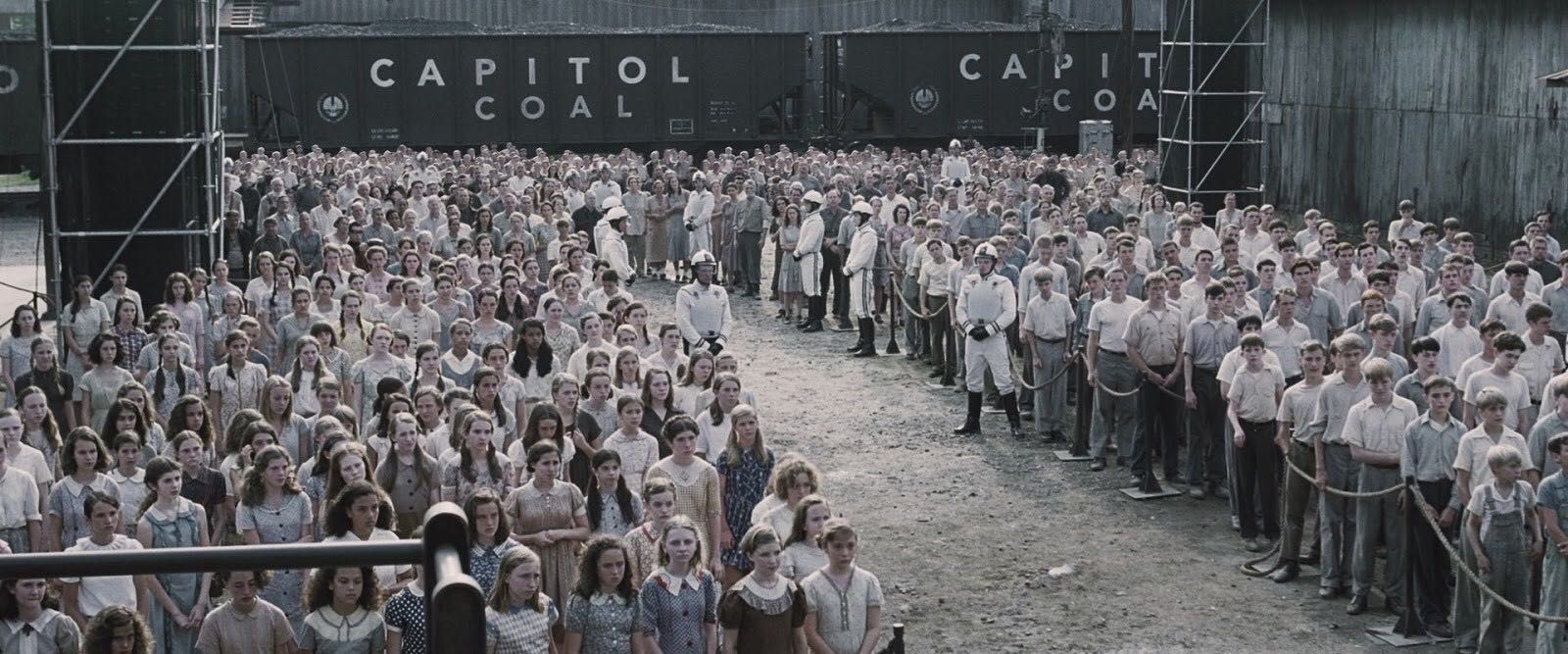
Katniss and Peeta are the main characters and receive much of the screen time and character development. Katniss is the provider for her family; she is the daughter of a coal miner and caretaker of a devastated widow and younger sister. Katniss is poor but proud and resourceful. Peeta, on the other hand, is the son of the Baker and his wife and never lacked for food.
Compared to Katniss, Peeta was well-off and part of a nuclear family. Peeta showcases his artistic ways in the form of camouflage and his devotion to Katniss during the Hunger Games. In addition to the two main characters, there are the villainous Careers: Marvel, Glimmer, Cato, and Clove, and the young Rue who is a stand-in for Katniss’ younger sister Primrose.
Creator’s Point Of View
Suzanne Collins speaks of the unjust treatment of individuals by society in her work. “The citizens of the districts have no basic human rights, are treated as slave labor, and are subjected to the Hunger Games annually.”(( Levithan, David. “Suzanne Collins Talks About ‘The Hunger Games,’ the Books and the Movies,” New York Times. Last modified October 18, 2018. )) In her work, Collins dives into society’s role in the dystopian future. She focuses not on the characters but on the macro-level issues such as governmental control and industrialized poverty. These issues plague the Districts in The Hunger Games but are also real-world issues.
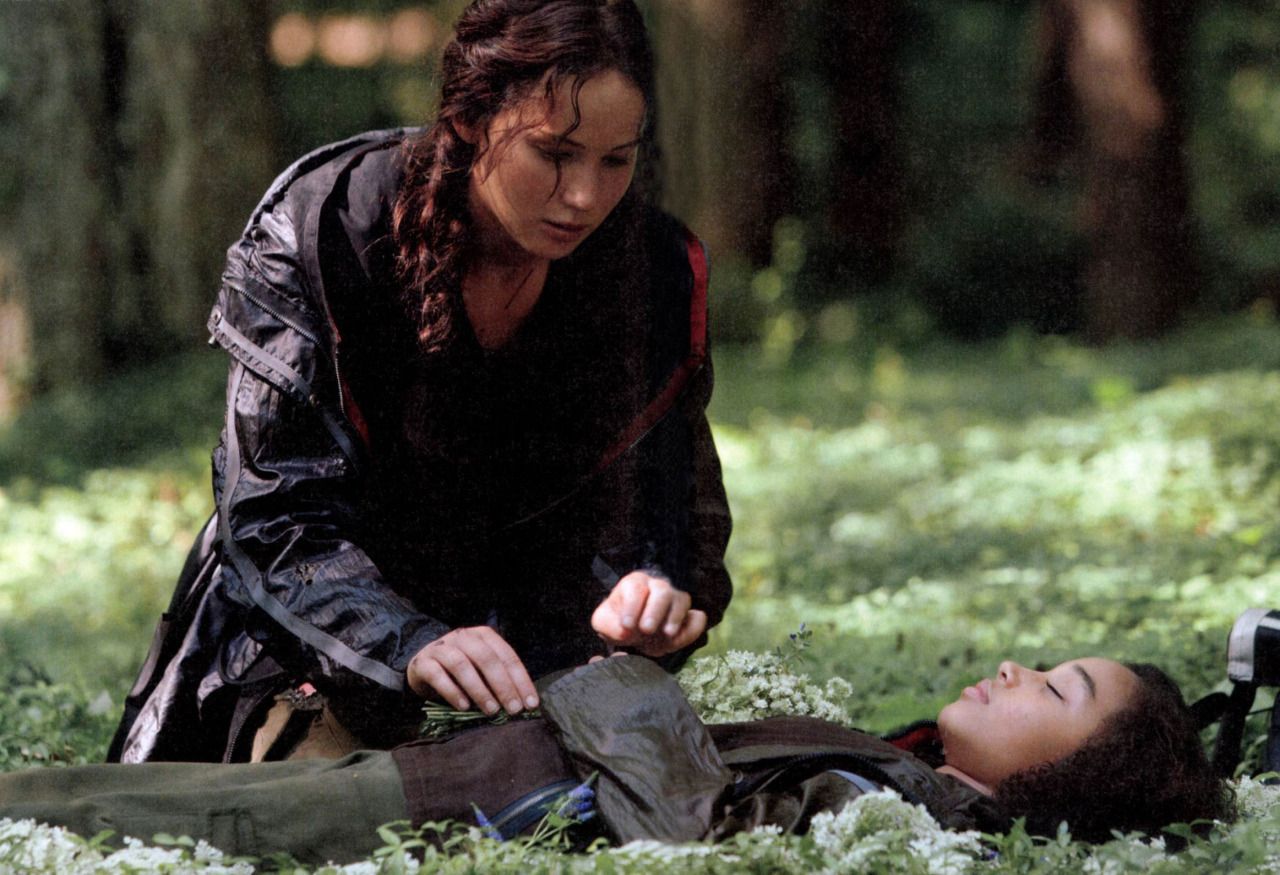
Despite its gore and vivid imagery, Battle Royale is viewed as a fable by the director, Kinji Fukasaku. “The themes which are included in the film are very much realistic modern issues… It’s not that I’m not concerned or not interested, but those simply form the basis of the fable.”(( Sharp, Jason and Tom Mes. “Kinji Fukasaku,” Midnight Eye Visions of Japanese Cinema. Last modified April 9, 2000. )) It is important to note that the fictional slant differentiates itself from The Hunger Games, which tackles societal issues present now and in the dystopian future. In Battle Royale the director uses a micro lens focusing solely on how teenagers would act in a dystopian battle.
Origin Stories
While the lens of viewing may be different for Battle Royale and The Hunger Games, the origin stories are similar. Collins states, “I was flipping through the channels one night between reality television programs and actual footage of the Iraq War when the idea came to me.”(( Levithan, David. “Suzanne Collins Talks About ‘The Hunger Games,’ the Books and the Movies,” New York Times. Last modified October 18, 2018. )) Meanwhile, Fukasaku says, “Since the burst of the bubble economy, these same adults, many of them salarymen and working-class people, they were put in a very difficult position with the recession or economic downturn… And the children who have grown up and witnessed what happened to the adults, their anxiety became heightened as well. So I set Battle Royale within this context of children versus adults.” (( Sharp, Jason and Tom Mes. “Kinji Fukasaku,” Midnight Eye Visions of Japanese Cinema. Last modified April 9, 2000. ))
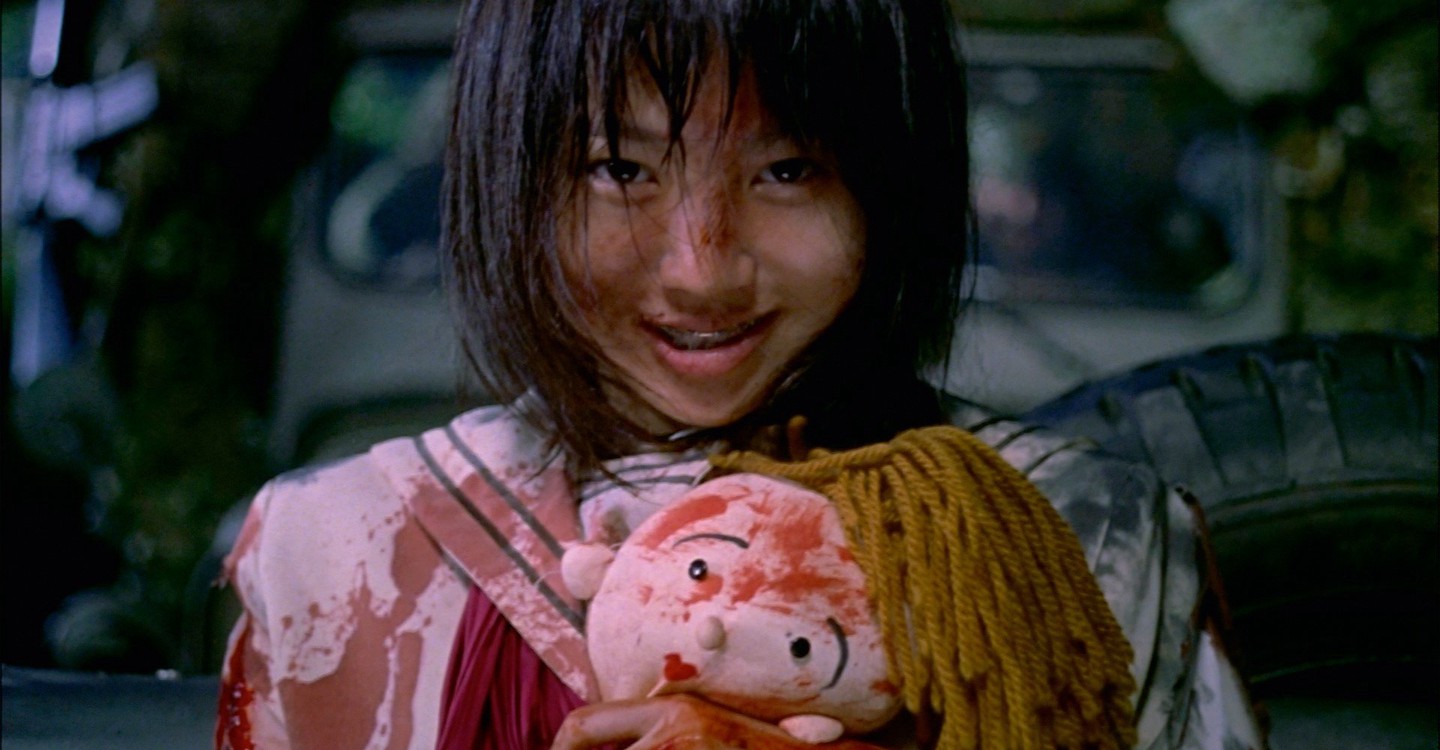
Clearly societal issues such as war and economic depression are deeply woven into the fabric of both Battle Royale and The Hunger Games. Neither of these stories could exist in a peaceful, prosperous, and idyllic future. In Battle Royale, flashbacks show Shuya Nanahara dealing with her father’s suicide, where the suicide note says “go for it” and “you will make it.” The message “go for it” shows the father has hope for the son to accomplish things in his lifetime his father never did. In The Hunger Games, Katniss warns her mother not to go deep into a depressive episode as she did with the death of her husband. During Mrs. Everdeen’s depression episode, Katniss took up the responsibility of taking care of her younger sister and the home.
Dystopian Fiction Or Dystopian Future?
Are Battle Royale and The Hunger Games purely dystopian fiction or are they humanity’s future? While the stories are based on past and current events, it does not necessarily cast the dystopian future in stone. Battle Royale in particular seems to be a voyage into the teenage tropes more than a predictor of the future. The focus on teenage issues could be expressed on an airplane as easily as they are on a stranded island. The venue is less important than the characters. The clique of teenage girls could fight over the cute boy in a lighthouse or on a bus or in a classroom.
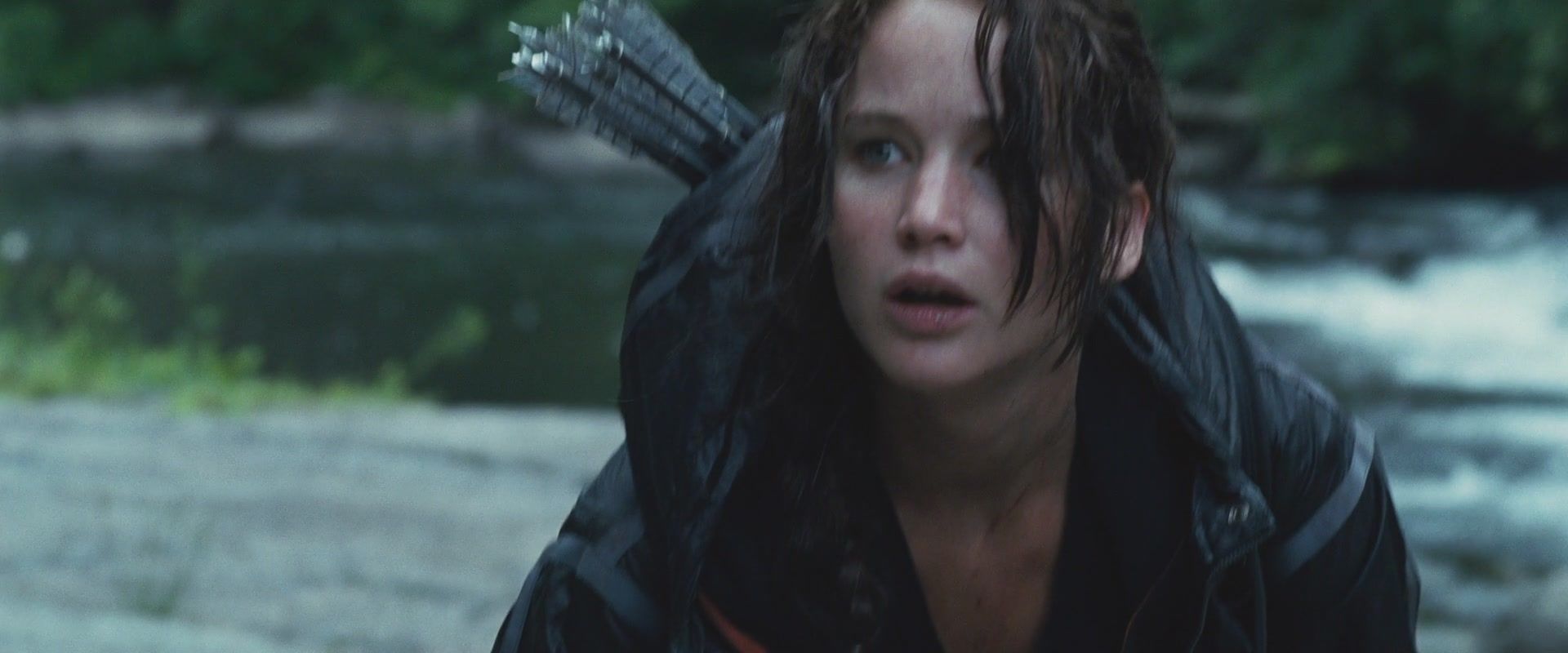
On the other hand, The Hunger Games venue is a character in its own right. The arena is central to the story, as it highlights the inequity of the Games and the gamemakers ability to influence gameplay. The viewers of the games can spend money to send gifts to the Tributes. This of course gives advantages to the richer districts who can afford to send gifts to their Tributes. Similarly, gamemakers can alter the arena to benefit or harm the Tributes. This changeability is central to the story and how the characters survive the Games.
Predecessor Or Companion?
While both Battle Royale and The Hunger Games tackle the difficulties of young people surviving in a dystopian world, they are not the same movie. Their similarities make them companions in the dystopian future. The creators of Battle Royale and The Hunger Games were both influenced by world events.
These events are defining the dystopian media that is being hungrily consumed by worldwide audiences. As war and oppression become our grim reality, movies such as these stay current in our viewpoint. While we appreciate dystopian fiction such as The Hunger Games and Battle Royale, it remains society’s duty to keep these stories fictional.
